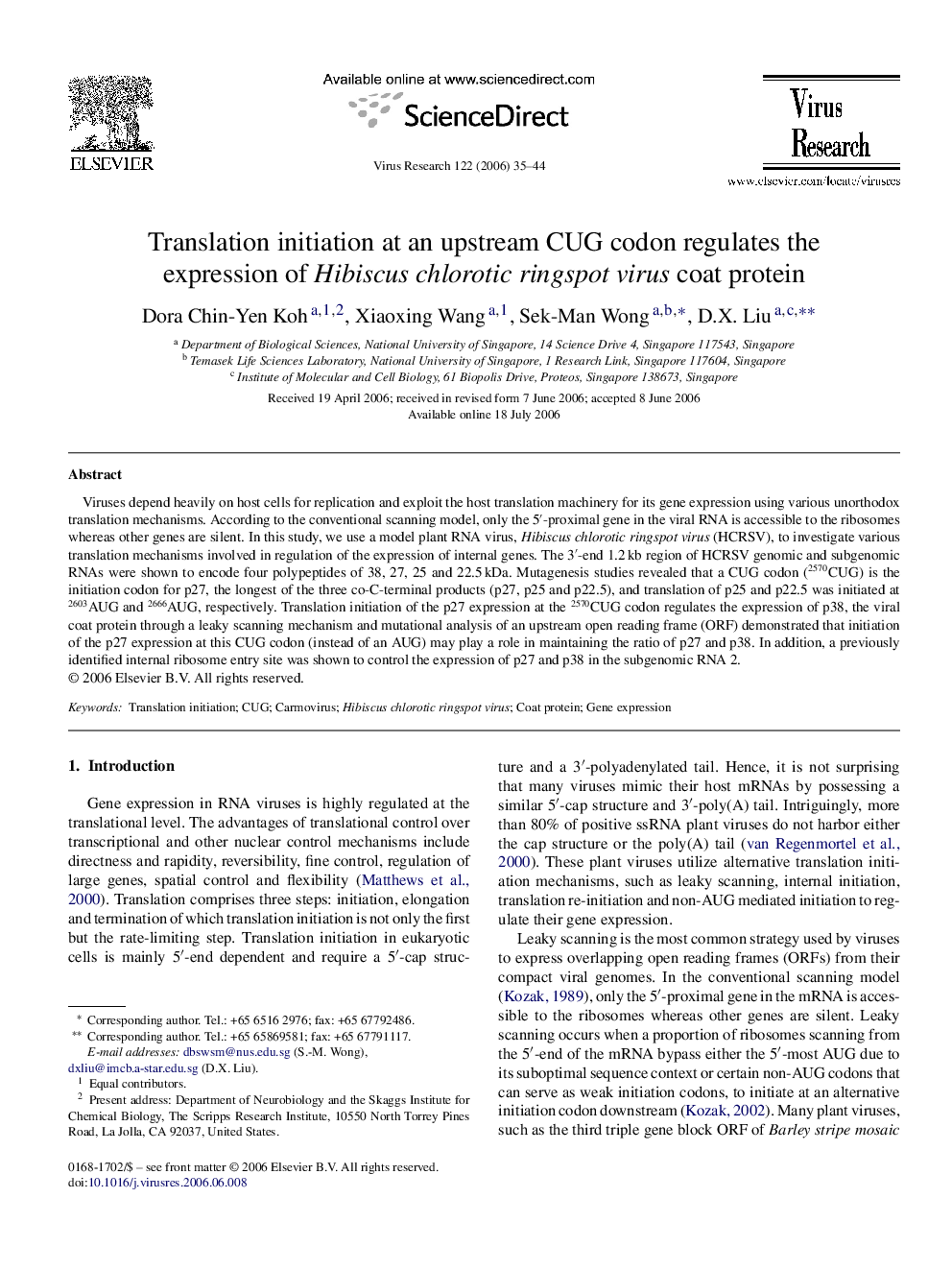| Article ID | Journal | Published Year | Pages | File Type |
|---|---|---|---|---|
| 3431165 | Virus Research | 2006 | 10 Pages |
Viruses depend heavily on host cells for replication and exploit the host translation machinery for its gene expression using various unorthodox translation mechanisms. According to the conventional scanning model, only the 5′-proximal gene in the viral RNA is accessible to the ribosomes whereas other genes are silent. In this study, we use a model plant RNA virus, Hibiscus chlorotic ringspot virus (HCRSV), to investigate various translation mechanisms involved in regulation of the expression of internal genes. The 3′-end 1.2 kb region of HCRSV genomic and subgenomic RNAs were shown to encode four polypeptides of 38, 27, 25 and 22.5 kDa. Mutagenesis studies revealed that a CUG codon (2570CUG) is the initiation codon for p27, the longest of the three co-C-terminal products (p27, p25 and p22.5), and translation of p25 and p22.5 was initiated at 2603AUG and 2666AUG, respectively. Translation initiation of the p27 expression at the 2570CUG codon regulates the expression of p38, the viral coat protein through a leaky scanning mechanism and mutational analysis of an upstream open reading frame (ORF) demonstrated that initiation of the p27 expression at this CUG codon (instead of an AUG) may play a role in maintaining the ratio of p27 and p38. In addition, a previously identified internal ribosome entry site was shown to control the expression of p27 and p38 in the subgenomic RNA 2.
